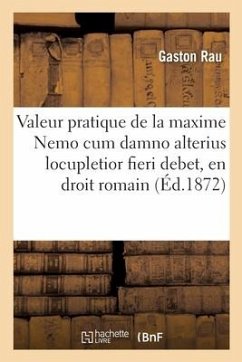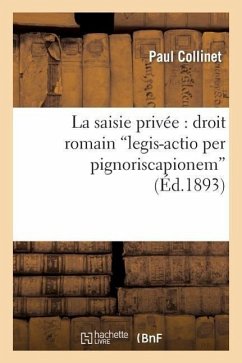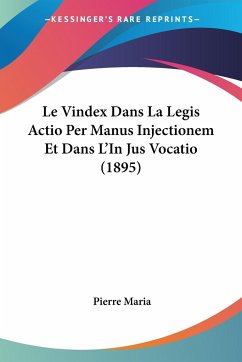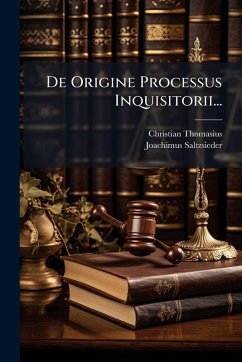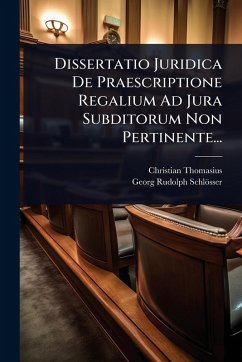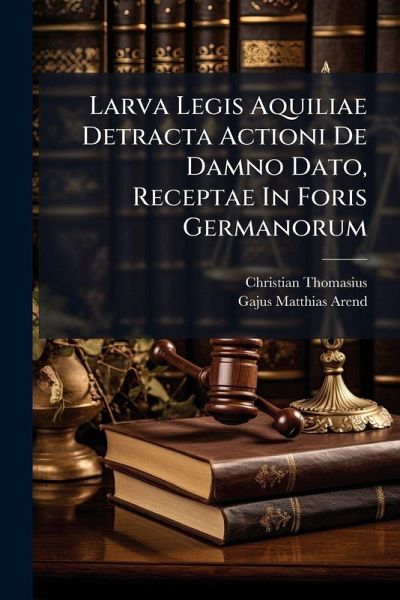
Larva Legis Aquiliae Detracta Actioni De Damno Dato, Receptae In Foris Germanorum

PAYBACK Punkte
7 °P sammeln!
Larva Legis Aquiliae Detracta Actioni De Damno Dato, Receptae In Foris Germanorum, by Christian Thomasius and Gajus Matthias Arend, delves into the intricacies of the Lex Aquilia, a foundational Roman law concerning damages, and its subsequent reception and adaptation within the legal systems of German-speaking regions. This work examines how the principles of the Lex Aquilia, initially conceived in Roman jurisprudence, were interpreted and applied in the context of Germanic legal traditions. It explores the historical evolution of damage law, tracing its transformation from ancient Rome to th...
Larva Legis Aquiliae Detracta Actioni De Damno Dato, Receptae In Foris Germanorum, by Christian Thomasius and Gajus Matthias Arend, delves into the intricacies of the Lex Aquilia, a foundational Roman law concerning damages, and its subsequent reception and adaptation within the legal systems of German-speaking regions. This work examines how the principles of the Lex Aquilia, initially conceived in Roman jurisprudence, were interpreted and applied in the context of Germanic legal traditions. It explores the historical evolution of damage law, tracing its transformation from ancient Rome to the legal practices of early modern Germany. Thomasius and Arend meticulously analyze the nuances of the law, offering insights into its practical application and theoretical underpinnings. This study is invaluable for legal historians, scholars of Roman law, and anyone interested in the development of legal thought across different cultures and epochs. The book provides a detailed examination of the reception process, highlighting the ways in which legal concepts are modified and integrated into new legal environments, making it a significant contribution to comparative law and legal history. This work has been selected by scholars as being culturally important, and is part of the knowledge base of civilization as we know it. This work was reproduced from the original artifact, and remains as true to the original work as possible. Therefore, you will see the original copyright references, library stamps (as most of these works have been housed in our most important libraries around the world), and other notations in the work. This work is in the public domain in the United States of America, and possibly other nations. Within the United States, you may freely copy and distribute this work, as no entity (individual or corporate) has a copyright on the body of the work. As a reproduction of a historical artifact, this work may contain missing or blurred pages, poor pictures, errant marks, etc. Scholars believe, and we concur, that this work is important enough to be preserved, reproduced, and made generally available to the public. We appreciate your support of the preservation process, and thank you for being an important part of keeping this knowledge alive and relevant.







